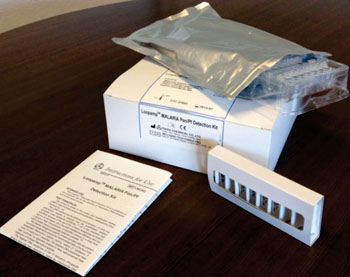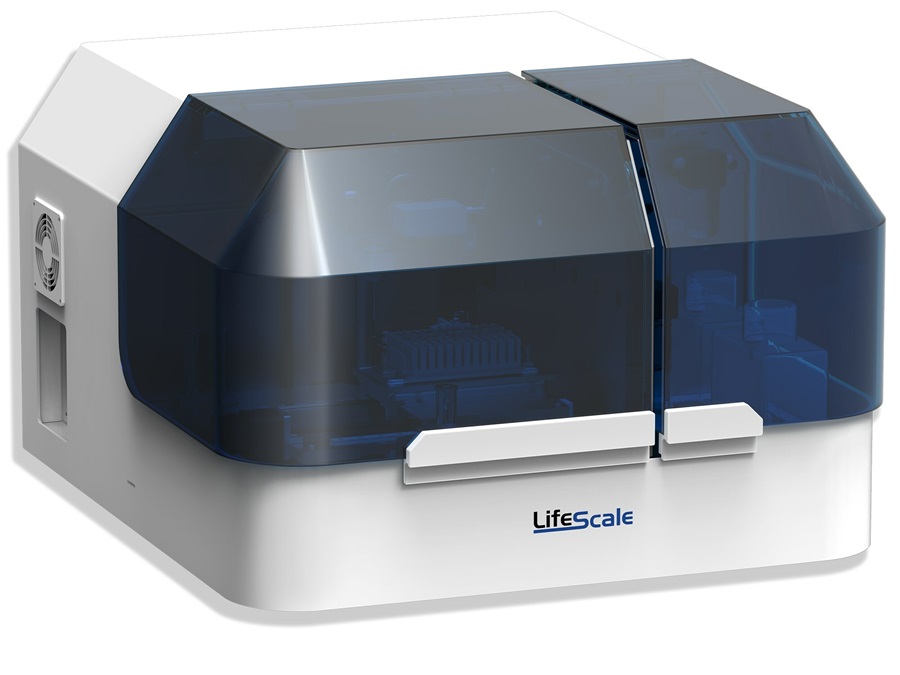Improved LAMP Test Diagnoses Symptomatic Falciparum Malaria
By LabMedica International staff writers
Posted on 09 Apr 2014
The molecular diagnosis of malaria by nucleotide amplification requires sophisticated and expensive instruments, typically found only in well-established laboratories.Posted on 09 Apr 2014
Loop-mediated isothermal amplification (LAMP) has provided a new platform for an easily adaptable molecular technique for molecular diagnosis of malaria without the use of expensive instruments.

Image: Loop mediated isothermal amplification (LAMP) detection kit for malaria (Photo courtesy of Eiken Chemical Co. Ltd.).
Scientists from the International Center for Diarrheal Disease Research (Dhaka, Bangladesh) working with colleagues in North America collected blood samples included 106 microscopy-positive P. falciparum infections and 105 microscopically negative samples. All the subjects had febrile illness and were suspected of malaria. Routine microscopy was performed by experienced microscopists on thick and thin smear slides.
DNA was extracted and real-time polymerase chain reactions (RT-PCR) were performed using Invitrogen SYBR Green I supermix UDG (Life Technologies Corporation; Grand Island, NY, USA). A new primer set was designed targeting the 18S ribosomal ribonucleic acid (rRNA) gene for the detection of P. falciparum in whole blood samples. The efficacy of LAMP (Eiken Chemical Co. Ltd.; Tokyo, Japan) using the new primer set was assessed in this study in comparison to that of a previously described set of LAMP primers. Microscopy and real-time PCR were used as reference methods for detecting P. falciparum. Pre-addition of hydroxy napthol blue (HNB) in the LAMP reaction caused a distinct color change, thereby improving the visual detection system.
The new LAMP assay was found to be 99.1% sensitive compared to microscopy and 98.1% when compared to real-time PCR and the specificity was 99% and 100% in contrast to microscopy and real-time PCR, respectively. The augmented LAMP method can detect at least 5 parasites/μL of infected blood within 35 minutes, while the other LAMP method tested in this study, could detect a minimum of 100 parasites/μL of human blood after 60 minutes of amplification.
The authors concluded that the new LAMP method is highly sensitive and specific for the diagnosis of symptomatic falciparum malaria. This method can be an alternative molecular diagnostic tool to PCR and might become a standard method for wider use. Furthermore, this method has immense potential to become a tangible tool for point-of-care diagnosis of malaria and treatment monitoring in healthcare and epidemiological studies. The study was published on March 5, 2014, in the journal Acta Tropica.
Related Links:
International Center for Diarrheal Disease Research
Life Technologies Corporation
Eiken Chemical Co. Ltd.












.jpg)
